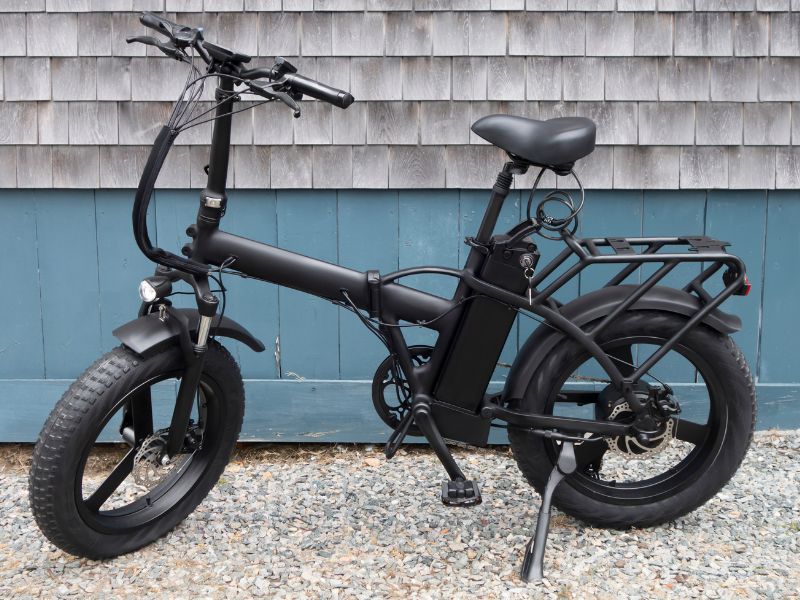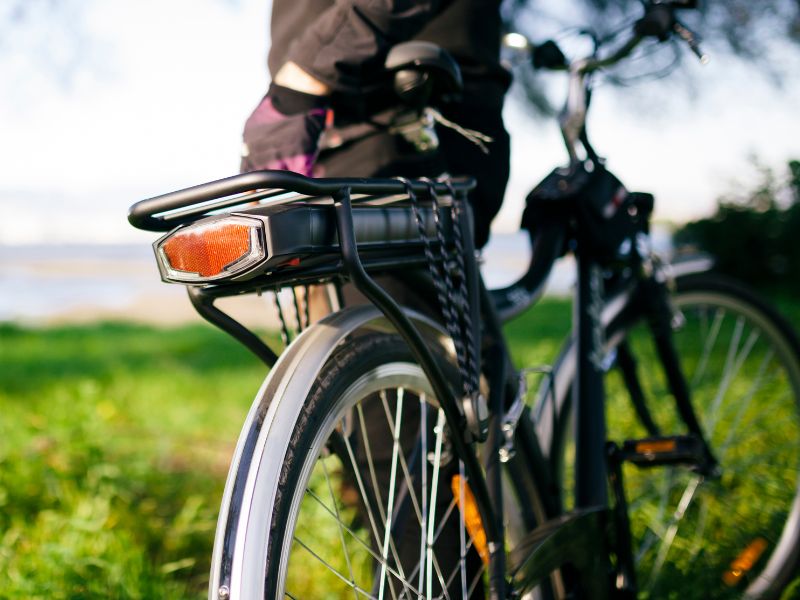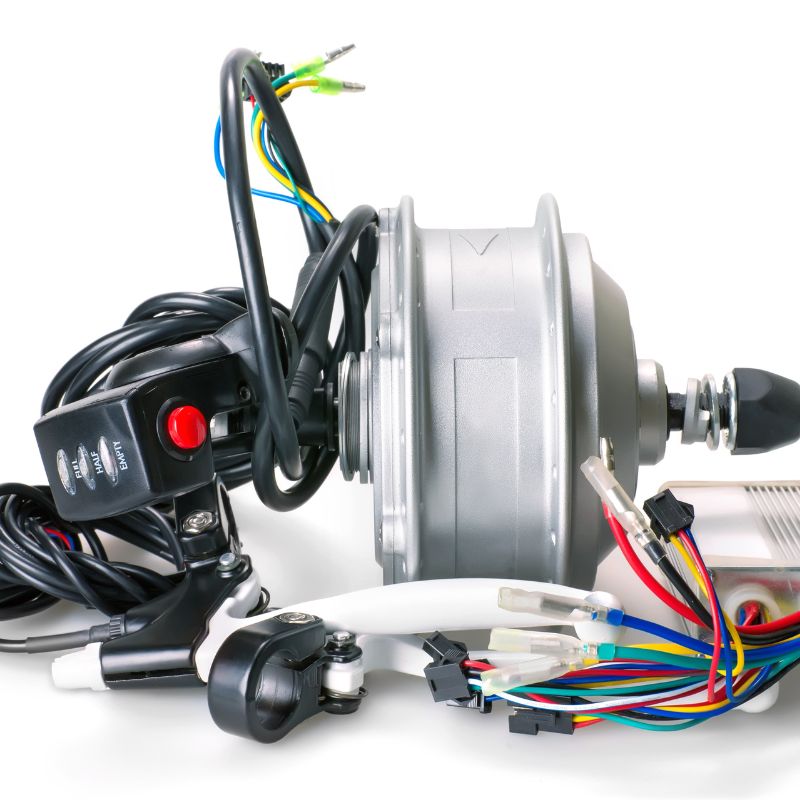The Ultimate Guide to Electric Bike Conversion Kits
Are you looking to transform your regular bicycle into an electric bike? Electric bike conversion kits offer a cost-effective and convenient solution. With these kits, you can easily add an electric motor, battery, and other components to your existing bike, giving you the benefits of an electric bike without purchasing a brand new one. In this comprehensive guide, we will explore the pros and cons of electric bike conversion kits, the different types available, and what you should consider when selecting the right kit for your needs.
The Pros of Electric Bike Conversion Kits
1. Cost Savings
One of the biggest advantages of using an electric bike conversion kit is the cost savings. Compared to buying a pre-built electric bike, the cost of a conversion kit is significantly lower. You can find good conversion kits starting at around $200 (excluding the battery). This is a great option for those who want the benefits of an electric bike without breaking the bank. Additionally, converting your bike for daily use can save you money on transportation costs, such as fuel or public transportation fees.
2. Flexibility to Choose Components
When you opt for an electric bike conversion kit, you have the flexibility to choose the specific components that suit your needs. There is a wide variety of motor and controller options available, allowing you to customize your electric bike according to your preferences. Whether you need a motor for daily commuting, riding on rough terrain, or towing a trailer, you can find the perfect fit for your bike design.
3. Easy Installation and Removal
Most electric bike conversion kits are designed to be easily installed and removed. This means that if you want to switch back to a regular bike, you can simply remove the conversion kit and restore your bike to its original state. This feature is particularly useful for those who enjoy occasional exercise using their bike. You can have the best of both worlds – an electric bike for when you need assistance and a regular bike for when you want to pedal on your own.
The Cons of Electric Bike Conversion Kits
1. Aesthetics
One drawback of electric bike conversion kits is that they may not have the same sleek appearance as pre-built electric bikes. Since your bike was not originally designed to be electric, there may be visible wires connecting the motor, controller, and battery. However, with a little organization and creativity, you can hide these wires and achieve a neat and aesthetically pleasing look.
2. Installation Expertise
Installing an electric bike conversion kit may require some level of technical knowledge and skill. If you are not familiar with electrical tools and their safe usage, it is advisable to seek help from a professional electric bike shop. Before handing over your bike for installation, make sure to review the technician’s previous work and check how well they have organized the wires. A skilled technician will pay attention to detail and ensure a clean and efficient installation.
3. Planning and Compatibility
Another disadvantage of conversion kits is the need for careful planning and compatibility. Before purchasing a conversion kit, you must consider whether your current bike is suitable for the chosen kit in terms of design and available space. Additionally, you should determine your intended use for the electric bike after the conversion. Factors such as adding a baby seat, carrying heavy loads, or daily city commuting may require different motor power and specifications.

Selecting the Right Electric Bike Conversion Kit
Now that we have explored the pros and cons of electric bike conversion kits, let’s discuss the key considerations when selecting the right kit for your bicycle. It is also worthwhile bearing in mind the laws regarding ebike use in your location, to ensure when your conversion is complete, it complies with all legal requirements.
1. Determine Your Daily Use
Before choosing a conversion kit, it is important to determine how you plan to use your electric bike after the conversion. This will influence the type of conversion kit, its power, and other specifications you should look for. For example, if you intend to carry heavy loads or attach a trailer, you will need a motor with higher torque and power. On the other hand, if you primarily ride in the city, a lower-power motor may be sufficient.
2. Choose the Assist System
Electric bike conversion kits offer two main types of assist systems: throttle and pedal assist. Throttle assist allows you to control the motor using a throttle, similar to a motorcycle. Pedal assist, on the other hand, provides assistance when you pedal, making the ride feel more natural. Consider your preferences and riding style when choosing between these two systems. It is important to note that you can always add a pedal assist system to your conversion kit later, even if you initially opt for a throttle system.
3. Check Bike Compatibility
Ensure that your bike can handle the weight of the conversion kit. Electric bike conversion kits typically weigh between 3 to 9 kilograms, depending on the components involved. Add the weight of the kit, battery, and any additional accessories you plan to install, and test your bike’s ability to handle this weight. Ride your bike with the added weight for at least one mile to check for any signs of strain or frame stress.
4. Consider Bottom Bracket Width
Pay attention to the bottom bracket width of your bike when selecting an electric bike conversion kit. Most motors in these kits require a specific width, typically ranging from 63 to 70 millimeters. Make sure to measure your bike’s bottom bracket width before making a purchase to ensure compatibility.
5. Evaluate Chain Line Compatibility
The chain line on your electric bike should be compatible with the power and specifications of the motor you choose. A mismatched chain line can lead to poor performance, excessive wear on the chain, and potential damage to the motor. It is essential to ensure that your bike’s chain line can handle the power output of the motor you select.
6. Consider the Frame Type
The type of bike frame you have plays a crucial role in the successful assembly of an electric bike conversion kit. While a normal hardtail bike allows for easy installation of the kit and battery, a full-suspension bike may have limited space, making it challenging to fit a larger battery inside the frame. Consider the frame design and available space before choosing a conversion kit.
7. Check Axle Type Compatibility
The type of axles on your bike can impact the installation of an electric bike conversion kit. Bikes with out boost or bolt axles may pose compatibility issues. Ensure that your bike has a standard 135mm dropout, which is typically compatible with most conversion kits.

See Also: Can You Convert Your Bike into an Ebike, or Electric Bicycle?
And: The Latest Innovations and Trends in Electric Bike Technology and Design
Types of Electric Bike Conversion Kits
Electric bike conversion kits come in different types, each with its own advantages and applications. With pedal assist, using cadence sensors, and/or throttle power, most conversion kits will offer a range of assistance power options. You can choose what you require depending on your fitness and the terrain you are negotiating. Let’s explore the three main types:
1. Front Hub-Drive Kit
The front hub-drive kit is easy to install, as the motor is placed in the front wheel. This type of kit is often equipped with a throttle assist system, allowing you to control the motor with a throttle. A pedal assistance system (PAS) may also be included or offered as an option. It is a popular choice for city riding due to its simplicity and affordability. However, front hub-drive kits may have limited power and are not ideal for off-road or rough terrain riding.
2. Mid-Drive Motor Kit
The mid-drive motor kit offers excellent performance and versatility. These motors are installed near the bike’s bottom bracket, providing better weight distribution and improved handling. Mid-drive motors are known for their high torque and power, making them suitable for various applications, including city commuting and off-road adventures. They can be powered by both a throttle and/or a PAS system, depending on specs. However, installation can be more complex, and the market offers a wide range of options, which may require additional research to find the best fit for your needs.
3. Rear Hub Motor Kit
Rear hub motor kits are popular due to their simplicity and ease of installation. These motors are placed in the rear wheel hub and offer higher power compared to front hub motors. Rear hub motor kits are typically throttle-assisted, providing direct control over the motor’s power. A pedal assistance system (PAS) may also be included or offered as an option. They are suitable for various uses, especially when equipped with high-power motors. However, the capabilities of rear hub motor kits may be limited by the motor’s capacity, and they may not offer the same level of torque as mid-drive motors.

Choosing the Right Battery for Your Electric Bike Conversion Kit
When selecting a battery for your electric bike conversion kit, there are a few key factors to consider:
1. Battery Dimension
Ensure that the dimensions of the battery are suitable for your bike and the available space for installation. Battery sellers usually provide the dimensions, allowing you to choose the right size for your needs.
2. Battery Capacity
Consider your personal needs when determining the battery capacity. If you require longer range and more power, opt for a higher-capacity battery. Keep in mind that higher-capacity batteries are usually larger and heavier, as well as more expensive, so strike a balance between capacity, practicality, and budget.
3. Battery Type
There are various types of batteries available for electric bike conversion kits, including lithium-ion, lithium-polymer, and lead-acid batteries. Lithium-ion batteries are commonly used due to their high energy density, lightweight, and longer lifespan. Consider the specific advantages and disadvantages of each battery type before making a decision.
Other Essential Parts to Consider
In addition to the motor, battery, and assist system, there are a few other parts that you should pay attention to when selecting an electric bike conversion kit:
1. LCD Unit
Some kits offer optional LCD units, which provide information such as speed, battery level, and distance traveled. Check if the kit includes an LCD unit and ensure that it is compatible with the kit to avoid any additional costs.
2. Ebike Controller
The controller is a crucial component that determines the performance of your electric bike. Ensure that the controller’s capacity matches the battery’s capacity to achieve optimal performance. Familiarize yourself with the setup and configuration of the controller to maximize the potential of your electric bike.
Conclusion
Electric bike conversion kits are a fantastic alternative to purchasing a pre-built electric bike. They offer cost savings, flexibility in component selection, and easy installation and removal. By considering factors such as daily use, compatibility, and battery selection, you can successfully convert your bike into an electric powerhouse. Choose between front hub, mid-drive, or rear hub motor kits based on your riding preferences and requirements. With the right conversion kit, you can enjoy the benefits of an electric bike while retaining the familiarity of your own bike. So, why not breathe new life into your bicycle with an electric bike conversion kit? Experience the joy of effortless riding and explore new possibilities with an electrified ride.

